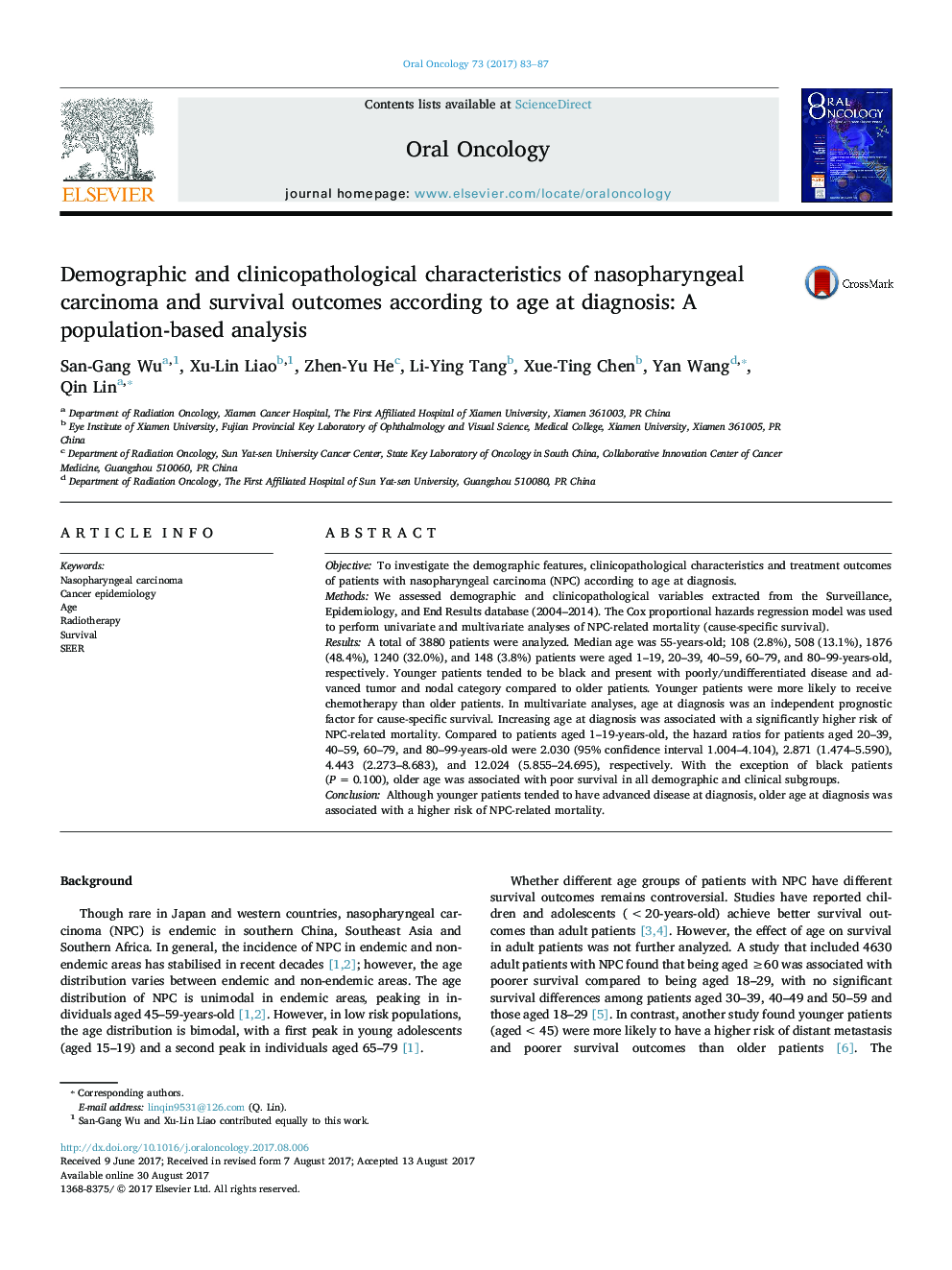| کد مقاله | کد نشریه | سال انتشار | مقاله انگلیسی | نسخه تمام متن |
|---|---|---|---|---|
| 5642531 | 1586237 | 2017 | 5 صفحه PDF | دانلود رایگان |
- The effect of age on survival outcomes in NPC remains controversial.
- We analyzed 3880 patients from a population cancer registry.
- Younger patients tended to have advanced tumor and nodal category.
- Older patients had a higher risk of NPC-related mortality.
ObjectiveTo investigate the demographic features, clinicopathological characteristics and treatment outcomes of patients with nasopharyngeal carcinoma (NPC) according to age at diagnosis.MethodsWe assessed demographic and clinicopathological variables extracted from the Surveillance, Epidemiology, and End Results database (2004-2014). The Cox proportional hazards regression model was used to perform univariate and multivariate analyses of NPC-related mortality (cause-specific survival).ResultsA total of 3880 patients were analyzed. Median age was 55-years-old; 108 (2.8%), 508 (13.1%), 1876 (48.4%), 1240 (32.0%), and 148 (3.8%) patients were aged 1-19, 20-39, 40-59, 60-79, and 80-99-years-old, respectively. Younger patients tended to be black and present with poorly/undifferentiated disease and advanced tumor and nodal category compared to older patients. Younger patients were more likely to receive chemotherapy than older patients. In multivariate analyses, age at diagnosis was an independent prognostic factor for cause-specific survival. Increasing age at diagnosis was associated with a significantly higher risk of NPC-related mortality. Compared to patients aged 1-19-years-old, the hazard ratios for patients aged 20-39, 40-59, 60-79, and 80-99-years-old were 2.030 (95% confidence interval 1.004-4.104), 2.871 (1.474-5.590), 4.443 (2.273-8.683), and 12.024 (5.855-24.695), respectively. With the exception of black patients (PÂ =Â 0.100), older age was associated with poor survival in all demographic and clinical subgroups.ConclusionAlthough younger patients tended to have advanced disease at diagnosis, older age at diagnosis was associated with a higher risk of NPC-related mortality.
Journal: Oral Oncology - Volume 73, October 2017, Pages 83-87
